India Aims for the Moon
A US scientist reports from the scene of India’s first lunar launch.
/https://tf-cmsv2-smithsonianmag-media.s3.amazonaws.com/filer/Chandra-flash.jpg)
Paul Spudis, a Planetary Institute in Houston, has been blogging the launch of India’s first lunar mission, Chandrayaan-1, which lifted off early Wednesday morning from India’s east coast.
Through the fog, into the fog (October 21, 8:00 a.m.)
I’m sitting in a hotel room in Chennai, India, attempting to recover from my jet lag. Houston to India is a 26-hour trip (one way) and although there’s plenty of time to snooze, I never sleep well on planes. Through my brain-fog, I have CNN International on in the room. At the top of the hour, there’s a detailed report on the Chandrayaan-1 mission to the Moon, now less than 24 hours away from launch. The report describes the mission as well as ISRO’s (the Indian space agency’s) four-year effort to build the spacecraft, and has interviews with key mission personnel, including Mylswamy Annadurai, the mission director, with whom I have formed a close friendship during the last few years. The news item is enthusiastic and thorough.
This matches my previous experience in India closely—the Indian people are genuinely excited about going to the Moon. I’ve talked to porters, room cleaners, taxi drivers, airport security people and many others during my seven trips here over the past four years. When they find out that I’m here to work on the Chandrayaan mission, they are not only very interested, but very excited and well informed—about space, the Moon, and India’s first journey into the solar system.
Over the past 50 months, we’ve designed and built our instrument, the Mini-SAR, which will fly to the Moon tomorrow on an Indian PSLV rocket. Mini-SAR is an imaging radar designed to map the poles of the Moon. Because radar provides its own illumination, Mini-SAR will map the dark areas near the lunar poles and search for evidence of the presence of water ice. This has been a controversial subject for the last decade. Now, we’re going to collect information on these deposits by mapping them from an instrument in lunar orbit, a first in the exploration of the Moon.
So now I sit here in Chennai, gazing out my hotel window into a gray, drizzly day. I hope the weather is better just up the coast, but the monsoon is with us and rain is a fact of life for tropical India for the next six months. ISRO is determined to get the mission on its way to the Moon (having been delayed several times), but they do have minimum launch conditions. I don’t know what they are, but I hope to find out this afternoon, as we head up the coast to the ISRO launch site, SHAR, in Sriharikota, about 80 kilometers from Chennai. Less than 24 hours—and counting!
A long and tedious journey (October 21, 4:00 p.m.)
No, I’m not talking about the trip to the Moon. I’m talking about the three-hour, 100-km (65 mile) car trip I’ve just endured from Chennai to the Indian space launch center. Solid bumper-to-bumper traffic for two hours—and that was just to get out of Chennai! India has almost (but not quite) achieved total traffic gridlock in their cities, and the time getting out of the center city was most of the trip. After we reached the suburbs, our speed of progress increased substantially.
The Indians launch their missions from a space center known as the Satish Dhawan Space Centre, or SHAR (from its location, Sriharikota). It sits on a low-lying spit of land that borders the Indian Ocean. They launch from here for the same reason that the Americans launch from Cape Canaveral—to ensure that any falling debris from an exploded rocket falls harmlessly into the ocean.
SHAR has a lot of the same ambiance as the Cape. It’s rather isolated (as was Cape Canaveral early in its history) and it’s flat, humid and warm. Scrub palm and thorny brush cover the landscape. Sea birds dot the tidal and mud flats as we drive across what seems like an endless causeway connecting the mainland to the spit on which the launch pad lies. One interesting difference here is that you must always keep your eyes on the road—you’re liable to run into goats, cows, chickens, pigs and an endless stream of stray dogs that run heedlessly across and along the road.
We’re staying at the ISRO (Indian space agency) guesthouse, a large block building that has a college dorm atmosphere. The big influx of foreign visitors arrived today; I would guess that we have about 20 to 30 visitors here. The press is also here in force. I saw around 15 remote vans and cars outside the main gate of SHAR, all getting ready to provide live coverage of tomorrow’s launch for Indian television.
As I was talking to Jitendra Goswami, the Chief Scientist for Chandrayaan-1, in the courtyard of the guesthouse, a reporter from Indian television saw us and ran over to get a talking head soundbite. Ben Bussey, a colleague from Johns Hopkins University’s Applied Physics Laboratory, is here with me, so we both did our turn on camera. It’s always interesting to see how these short interviews get edited; sometimes, they don’t make you look particularly intelligent.
The weather is currently looking a lot better. It rained very heavily here yesterday, creating large, deep puddles in the parking lot to go with the high humidity and heat. The rain is not as much a concern for launch as the possibility of lightning. Goswami told me that the meteorologists are measuring continuously the electrical potential of the cloud cover. Pictures of the launch pad at SHAR show it to be surrounded by four very large red metal towers, all designed to serve as giant “lightning rods” to protect the vehicle.
We’re waiting around now to hear the status of the mission. We’ll probably be briefed at dinner tonight, which will be held in the dining hall nearby. I’ve found out that cameras are banned from SHAR, so I won’t be taking any pictures of the launch. But it will be intensely photographed by ISRO personnel.
A warm, rainy morning (October 22, 7:30 a.m.)
I wake at 3 a.m. Might as well get up, as my alarm would be going off shortly anyway. It’s pitch dark out here in the Indian boondocks. The small television in my room tells me that the countdown is proceeding smoothly. It is now about two and a half hours until launch.
Having heard light constant rain all night as I slept fitfully, I go outside with some anticipation about a weather delay in the launch of Chandrayaan. Outside, it’s calm and beautiful; a last-quarter Moon smiles down on SHAR from directly overhead, and the brighter stars twinkle through some high clouds.
We may just get this thing off today! No time for breakfast as the VIP contingent boards several large buses in the dark. They are taking us out to a special launch viewing site set up especially for us. The drive takes about 20 minutes, even though it cannot be more than a few miles away. In the warm, close dark morning, we pass the occasional stone sign, like one for the “S-Band Precision Tracking Station.” We finally arrive at an old, abandoned rocket assembly tower, a site that has been re-configured into a special viewing area for the launch.
As I wander about this site, I suddenly see the PSLV rocket on its pad, about three miles away. It is floodlit and surrounded by lightning arrestors. We have a clear view of the vehicle and it’s only about an hour and a half until launch. ISRO has set up tents with large video screens, showing the activities of Mission Control. The countdown has gone so smoothly that it makes me slightly worried. Weather is no problem, as we have broken rain clouds at low altitude with hazy cirrus above. Our viewstand should give us a spectacular view of the flight as the rocket curves over the Indian Ocean (which I cannot see from here; dunes block the view).
I strike up a conversation with Raj Chengappa, the managing editor of India Today, a news magazine. He wants to know all about our experiment, the Chandrayaan mission, and the value of the Moon. We have a great time in this discussion, as he is very well informed and we talk about the long term value of the Moon. I give him my lunar “stump speech”—that the Moon is a stepping stone to the rest of the solar system, a source of materials and energy to enable new spaceflight capabilities. Chandrayaan is a key pathfinder in our voyage back to the Moon.
The countdown continues, slowly ticking by until it’s just two minutes to launch before I even realize it. I stop talking to my friends and the people around me. I want to immerse myself in what is about to come.
Fire, thunder and water (October 22, 8:15 a.m.)
As the voice over the loudspeaker counts below 20 seconds, I strain my eyes to look out over the coastal scrub between me and the gleaming white monument in the distance. As the count reaches below 5 seconds, I first see the bright orange glow of rocket ignition. It is surprising, even though I expected to see it. In the demi-light of early morning, it is startling. As the count reaches zero, I finally see the entire vehicle—until now I could only view the upper two-thirds. It’s a beautiful white needle, with a huge ball of orange flame beneath it.
It first rises very slowly, but when it clears the launch tower, it is absolutely spectacular! The launch pad is surrounded by a thick plume of white smoke around the base of the tower. As it streaks through the sky, it is still dead silent—the rocket sound has not yet reached us at our viewing site. The rocket quickly disappears into the low morning rain clouds—it’s moving astonishingly quickly. Then I hear the deep roar of the engines. The low frequencies of the engine noise beats on my chest. The crowd seems disappointed that the rocket vanished so quickly, but I suspect it will re-appear soon.
It does! A bright orange spotlight rises above the low clouds, arcing over the ocean in a magnificent streak. We have it in continuous sight only for a few tens of seconds, but from these glimpses, I can get a good feel for the trajectory, taking the rocket east-southeast over the Indian Ocean, toward orbit. When the rocket goes out of sight a second time, the crowd rushes into the nearby tents, which are set up with computer readouts and video of the Mission Control Center. We all sit in the plastic lawn chair seats provided inside a very pleasant, air-conditioned tent. A plot of time versus velocity and time versus speed is on the screen, showing the rocket as a bright spot over a curve of the planned trajectory. As near as I can tell, it is absolutely spot on the money. It’s moving like a bat out of hell—after only five and a half minutes, the PSLV has already achieved orbital velocity.
As we all gather in the tent to watch Chandrayaan reach orbit, an enormous downpour occurs outside. The heavy monsoon rain pounds our tent roof. The space gods have smiled upon on us this day—the rain held off until after we had left Earth.
We all watch the trajectory information intently. Now, a mere 20 minutes after launch, Chandrayaan is on its way to the Moon. The crowd relaxes and applauds enthusiastically. It has been a memorable morning. This was my third launch; I attended the launch of Clementine to the Moon in 1994 (from Vandenberg AFB, on a surplus Titan II, the rocket that launched the Gemini astronauts). I also went to a space shuttle launch in 2001, a particularly memorable launch that arced over a full Moon, rising above the Atlantic. Both of those were striking experiences.
But I think this one actually exceeds the other two. The tension released after a launch is enormous. You work on an experiment for years, nursing it through financial and technical difficulties. You baby-sit it during testing and integration with the spacecraft. So much rides on something so dangerous. You have visions and nightmares of exploding rockets and time and effort wasted.
I do not have those thoughts this morning. This warm, rainy day in southern India, I feel wonderful. Our spacecraft got a superb ride this morning. It’s on its way to the Moon. Now I think ahead—what new adventures await us on the remainder of this voyage of discovery?
On its way (October 23, 4:00 a.m.)
After the launch, we all come back to the guesthouse for a late breakfast and celebration. Team Chandrayaan, the dedicated group of ISRO scientists and engineers who have worked on this mission, are all excited and jocular. There was tremendous pressure on them to deliver this mission, and with a perfect launch they are well along the road to success. I run into Madhavan Nair, the head of the Indian Space Agency. He is clearly tired, but very happy to have a “perfect” launch under his belt. I offer my congratulations and express our team’s gratitude for giving us a good start to the mission. For the first time, I also meet Chandra Dathan, the SHAR center director. He is all smiles and is clearly basking in the exultation of the moment. We know that the mission has only begun, but having a picture perfect launch has created a success vibe. Good karma for a space mission is always welcome.
After lunch, we make the long drive back from SHAR to Chennai. I am exhausted, having never really caught up on sleep since arriving two days earlier. But knowing that Chandrayaan is successfully on its way to the Moon is a great feeling. That evening, the Mini-SAR team celebrates the day’s events with a few gin and tonics, the one undeniable contribution to western civilization by the departed British Raj. (They contain quinine—anti-malarial, don’t you know.)
The print and electronic media are filled with stories on Chandrayaan. Few space missions get this level of attention in America. The launch and orbit inject was magnificent, and the stories cover the mission objectives, spacecraft instruments, and flight profile. While at SHAR, I was interviewed by two different Indian television networks. One of our team members, Bill Marinelli of NASA, tells me that one of those interviews just aired, although he caught only the end of it. The press coverage is overwhelming, positive and appears to be demand-driven, not an attempt to impose or simulate an excitement that doesn’t really exist. Today, all of India is proud of its space program. It has the right to be.
Back at the hotel in Chennai, we prepare to leave India and fly back home late that evening. We have lots of work ahead of us before Chandrayaan gets to the Moon next month. Next week, we’ll have our first opportunity to turn on our instrument, point the antenna at the Earth and calibrate it using the large radiotelescopes at Greenbank, West Virginia and the giant hole-in-the-ground dish at Arecibo in Puerto Rico. We will carefully map out the signal pattern of the Mini-SAR antenna and test its performance in space. We will then use these calibration tests to learn how to extract the maximum amount of knowledge from our data.
So far, so good. Now, we begin to look forward to the Moon.
/https://tf-cmsv2-smithsonianmag-media.s3.amazonaws.com/accounts/headshot/blog_headshot_spudis-300x300.jpg)
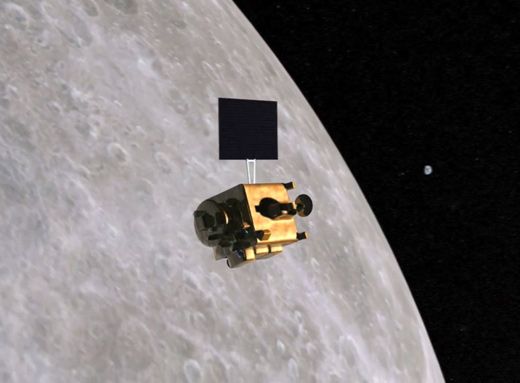
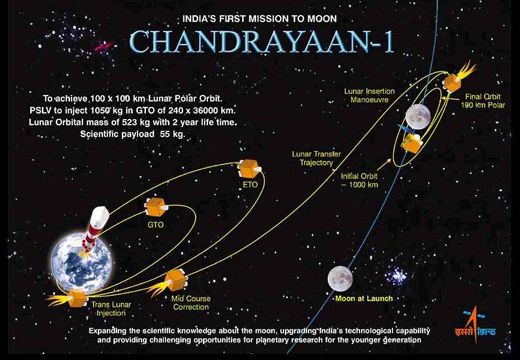
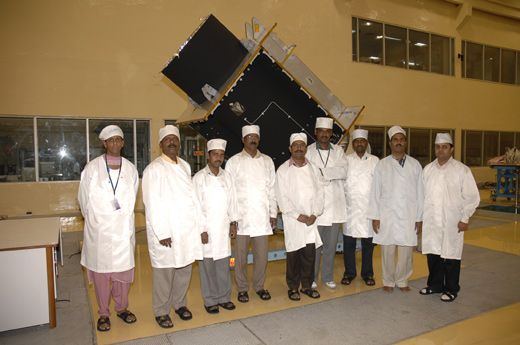
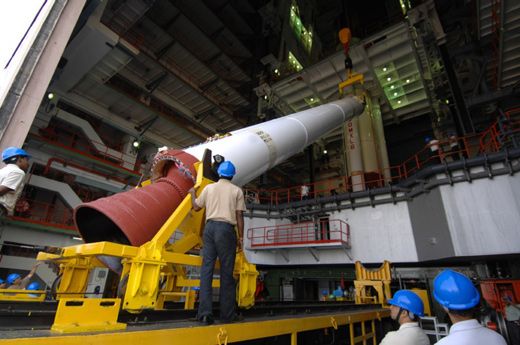
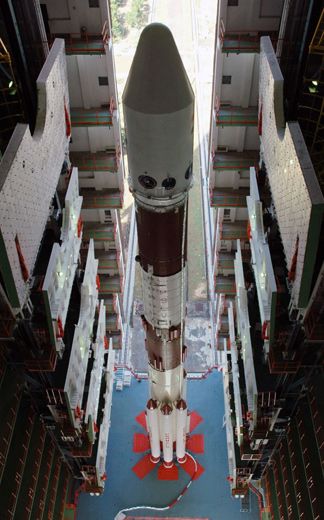
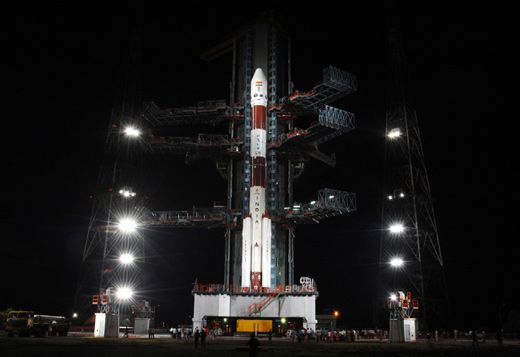
/https://tf-cmsv2-smithsonianmag-media.s3.amazonaws.com/accounts/headshot/blog_headshot_spudis-300x300.jpg)